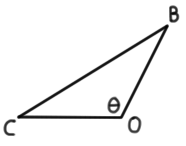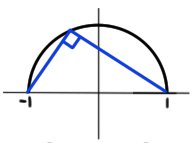Derive the law of cosines using the dot product:
(a) Write $\text{CB}$ in terms of $\text{OB}$ and $\text{OC}$
(b) Write $\left | \text{CB} \right|^2$ in terms of $\left | \text{OB} \right |$, $\left | \text{OC} \right |$ and $\text{OB} \cdot \text{OC}$
(c) Show that $\left | \text{CB} \right|^2 = \left | \text{OB} \right|^2 + \left | \text{OC} \right |^2 - 2 \left | \text{OB} \right| \left | \text{OC} \right| \cos \theta$.


